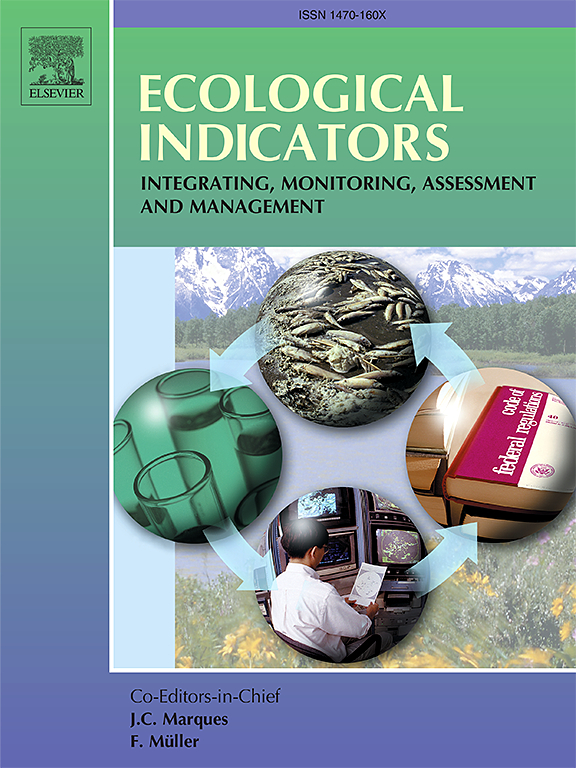Urban flood susceptibility mapping using deep and machine learning algorithms as a management tool: A case study of Sanandaj City, Iran
IF 7
2区 环境科学与生态学
Q1 ENVIRONMENTAL SCIENCES
引用次数: 0
Abstract
Urban flooding is a complex natural hazard event that incorporates climate change impacts with urban planning and developing challenges, requiring comprehensive strategies for mitigation and adaptation. Flood susceptibility mapping is one of the first steps in an appropriate strategy to reduce economic disruption and damage to urban environments due to flooding. This paper proposes a family of new deep neural networks, namely “deep abstract networks” (DANet) algorithm, which has not been conducted earlier on the susceptibility assessment worldwide, to be trained for producing reliable urban flood susceptibility maps, using Sanandaj City, Iran, as an example. In this procedure, 174 urban and 174 non-urban flood locations are considered in tandem with 19 flood factors prioritized using the reliefF attribute evaluation (RAE) feature selection technique. We determine the goodness-of-fit and prediction accuracy of our models using sensitivity, specificity, accuracy, kappa, root mean square error (RMSE), mean absolute error (MAE), and area under the curve (AUC). Furthermore, the new proposed deep learning algorithm is compared to the five state-of-the-art benchmark learning algorithms, i.e., Convolutional Neural Network (CNN), Support Vector Machine with Linear (SVM-Linear) and with radial basis function (SVM-RBF), Artificial Neural Network-Multi-Layer Perceptron (ANN-MLP), and Logistic Regression (LR). Here, land use, building density, distances to buildings, rainfall, and distances to passages are the five most influential factors in urban flood occurrence in the study area. The DANet algorithm achieves RMSE = 0.535, AUCmodel = 0.811, and AUCmap = 0.840, and thus outperforms the ANN-MLP, SVM-RBF, SVM-Linear, LR and CNN algorithms as an excellent alternative algorithm for managing areas prone to urban flooding with caution.
使用深度和机器学习算法作为管理工具的城市洪水易感性制图:以伊朗Sanandaj市为例
城市洪水是一种复杂的自然灾害事件,将气候变化影响与城市规划和发展挑战结合起来,需要采取全面的缓解和适应战略。绘制洪水易感性地图是制定适当战略以减少洪水对经济的破坏和对城市环境的破坏的第一步。本文以伊朗Sanandaj市为例,提出了一组新的深度神经网络,即“深度抽象网络”(DANet)算法,该算法在世界范围内尚未被用于易感性评估,用于生成可靠的城市洪水易感性图。在这个过程中,174个城市和174个非城市洪水地点与19个洪水因素串联考虑,使用救援属性评估(RAE)特征选择技术进行优先级排序。我们使用敏感性、特异性、准确度、kappa、均方根误差(RMSE)、平均绝对误差(MAE)和曲线下面积(AUC)来确定模型的拟合优度和预测精度。此外,将新提出的深度学习算法与卷积神经网络(CNN)、线性支持向量机(SVM-Linear)和径向基函数支持向量机(SVM-RBF)、人工神经网络多层感知器(ANN-MLP)和逻辑回归(LR)等五种最先进的基准学习算法进行了比较。其中,土地利用、建筑密度、建筑距离、降雨和通道距离是影响研究区城市洪水发生的五个最主要因素。DANet算法实现RMSE = 0.535, AUCmodel = 0.811, AUCmap = 0.840,优于ANN-MLP、SVM-RBF、SVM-Linear、LR和CNN算法,是谨慎管理城市洪涝易发区域的优秀替代算法。
本文章由计算机程序翻译,如有差异,请以英文原文为准。
求助全文
约1分钟内获得全文
求助全文
来源期刊

Ecological Indicators
环境科学-环境科学
CiteScore
11.80
自引率
8.70%
发文量
1163
审稿时长
78 days
期刊介绍:
The ultimate aim of Ecological Indicators is to integrate the monitoring and assessment of ecological and environmental indicators with management practices. The journal provides a forum for the discussion of the applied scientific development and review of traditional indicator approaches as well as for theoretical, modelling and quantitative applications such as index development. Research into the following areas will be published.
• All aspects of ecological and environmental indicators and indices.
• New indicators, and new approaches and methods for indicator development, testing and use.
• Development and modelling of indices, e.g. application of indicator suites across multiple scales and resources.
• Analysis and research of resource, system- and scale-specific indicators.
• Methods for integration of social and other valuation metrics for the production of scientifically rigorous and politically-relevant assessments using indicator-based monitoring and assessment programs.
• How research indicators can be transformed into direct application for management purposes.
• Broader assessment objectives and methods, e.g. biodiversity, biological integrity, and sustainability, through the use of indicators.
• Resource-specific indicators such as landscape, agroecosystems, forests, wetlands, etc.
 求助内容:
求助内容: 应助结果提醒方式:
应助结果提醒方式:


